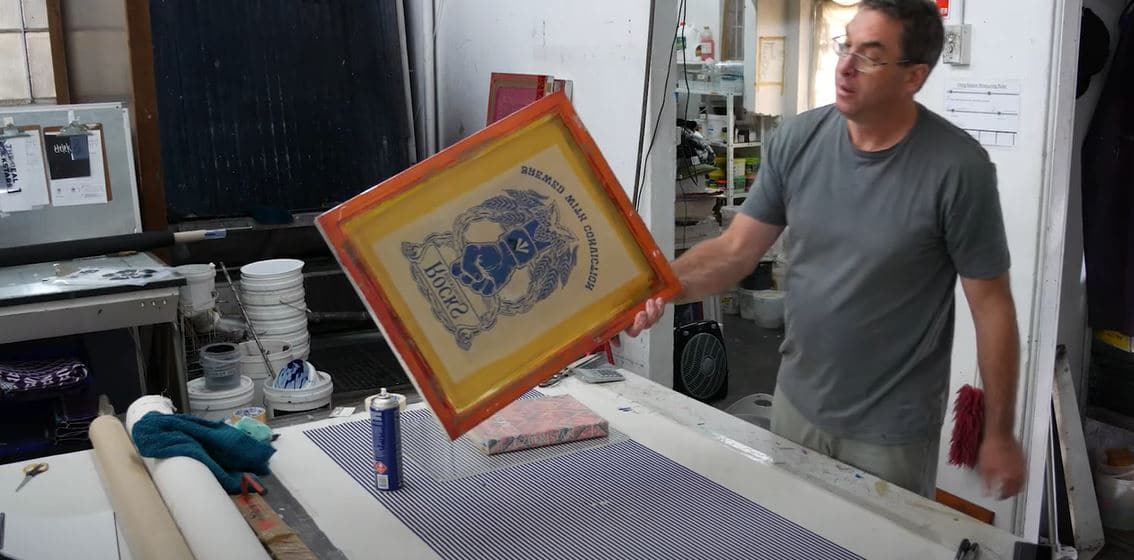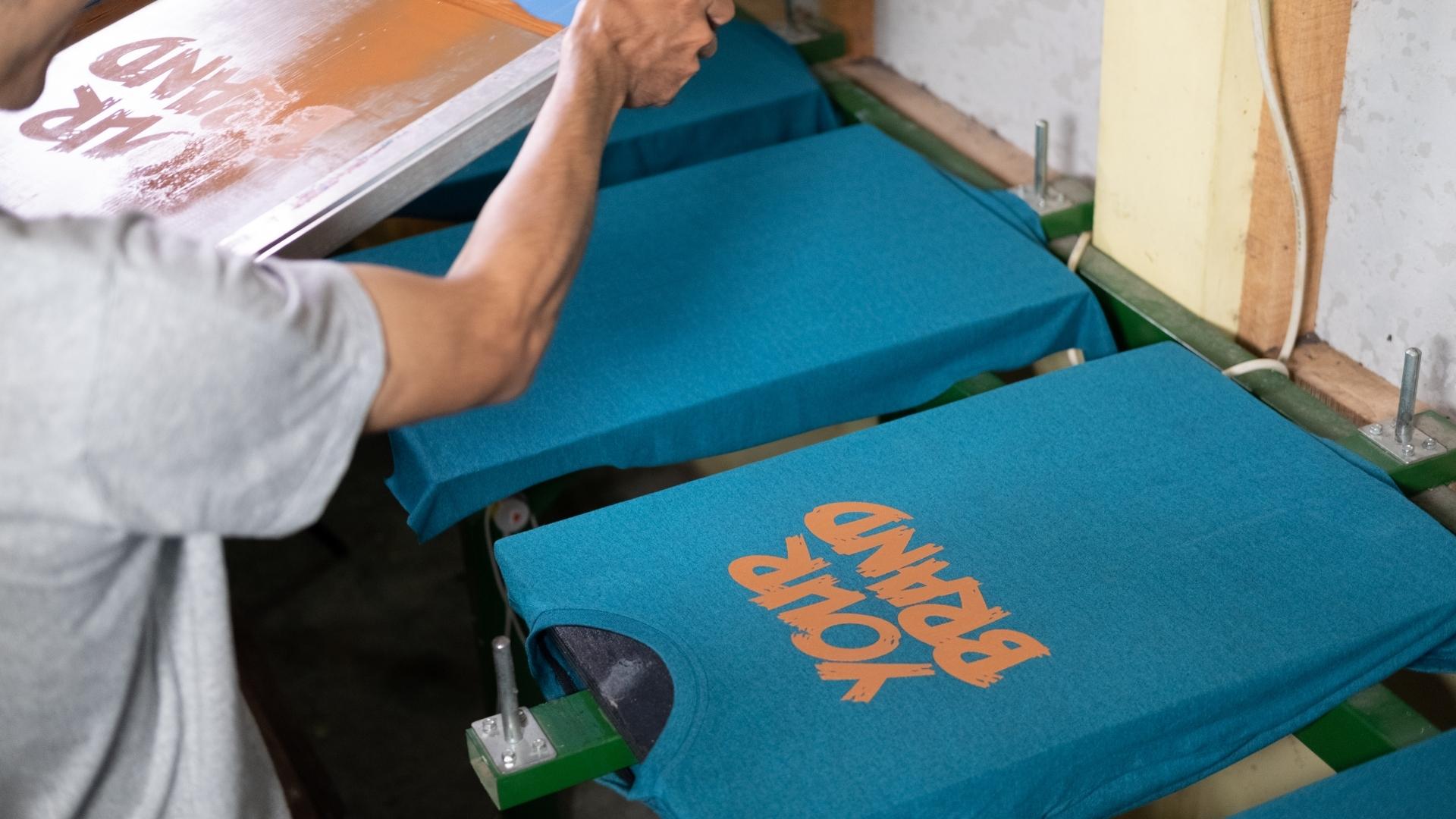The Essential Guide to Recognizing Screen Printing and Its Versatile Uses
Screen printing has a rich history that goes back to ancient times, advancing into an advanced strategy utilized throughout various markets today. This overview explores the ins and outs of the screen printing procedure, detailing its applications in home, fashion, and advertising and marketing design - 10:9 Design contact. Understanding these basics can open up innovative potential for both business and imaginative projects. The following sections will disclose necessary pointers and strategies to boost one's screen printing undertakings
The Background of Screen Printing
Screen printing has origins that map back centuries, its development shows the artistic and technical improvements of different cultures. Originating in ancient China, the technique was originally made use of for embellishing textiles and later infect Japan, where it ended up being integral to Ukiyo-e woodblock printing. The technique moved to Europe in the 18th century, where it gained appeal among craftsmens and commercial printers. The creation of photo solution in the 20th century reinvented screen printing, enabling even more detailed layouts and greater performance. Artists like Andy Warhol further thrust its popularity, using the medium to develop renowned jobs that mixed commercialism and art. By the late 20th century, screen printing had established itself as a functional strategy, employed in vogue, marketing, and great art. Today, it remains to advance, integrating electronic technology and broadening its applications throughout various markets.
The Screen Printing Process Explained
Screen printing transforms imaginative visions into concrete layouts through a collection of accurate actions. A photo is created and then transferred onto a screen, usually made of fine mesh fabric extended over a structure. A light-sensitive solution is put on the screen, which is exposed to light, setting in areas not covered by the image. After washing out the unhardened solution, a pattern is developed.
Next off, the screen is placed over the substratum, whether it be textile, paper, or an additional material. Ink is then pressed via the open locations of the stencil using a squeegee, transferring the design onto the substratum below. This procedure can be repeated for multiple colors, requiring separate screens for every hue. The printed thing is healed making use of heat to ensure the ink sticks effectively, resulting in a sturdy, vivid style ready for usage.
Sorts Of Screen Printing Techniques

In addition, specialty strategies, such as discharge screen printing, remove color from the textile to produce softer prints, while aluminum foil screen printing applies metallic foil to accomplish a glossy coating (10:9 Design Screen Printing). Each strategy supplies distinctive features, satisfying numerous innovative requirements and production scales, eventually increasing the possibilities within the screen printing domain
Applications of Screen Printing in Different Industries

In addition, the signs and marketing fields use screen printing for creating appealing display screens and banners. This approach permits vibrant shades and elaborate layouts that record interest. In electronic devices, screen printing is utilized for using conductive inks to motherboard, essential for part connections. Moreover, the home décor market embraces screen printing to produce distinct designs on textiles and wall art. Overall, screen printing acts as a crucial tool across varied fields, improving items with personalized and aesthetically enticing graphics.
Tips for Successful Screen Printing Projects
While undertaking a screen printing job, careful attention to detail can significantly enhance the final outcome. Selecting top notch materials is essential; this includes the screen, inks, and substrates. Utilizing suitable mesh counts can affect more info ink deposition and information resolution. Prep work is just as important; extensive cleansing of screens and appropriate direct exposure times assure crisp prints.
Next off, exact registration is essential for multi-color prints. Making use of positioning tools can aid achieve precise layering. Additionally, screening prints on scrap products prior to production helps identify prospective concerns without squandering sources.

Frequently Asked Inquiries
What Materials Are Finest for Screen Printing on Material?
Cotton and polyester blends are excellent for screen printing on fabric as a result of their durability and ink absorption. Additionally, specialty materials like silk or canvas can create special structures and finishes, enhancing the overall style top quality.
Exactly how Do I Tidy and Maintain Screen Printing Devices?
To clean and maintain screen printing devices, one ought to on a regular basis wash displays with ideal solvents, evaluate mops for wear, lubricate moving components, and store all items in a completely dry, dust-free atmosphere to extend their life-span.
What Are the Environmental Effects of Screen Printing?
Screen printing can have considerable ecological impacts, consisting of chemical waste from inks and solvents, water use during cleansing procedures, and power usage. Sustainable methods and environment-friendly materials are necessary for lessening these negative results.
Can Screen Printing Be Done in your home Effectively?
Screen printing can be successfully done at home with the appropriate materials and techniques. Hobbyists can create high quality prints, though success depends on their ability degree, devices, and understanding of the procedure included.
What Are the Costs Linked With Beginning a Screen Printing Company?

Starting a screen printing organization involves prices for tools, products, and workspace. Initial costs normally vary from a couple of hundred to numerous thousand dollars, relying on the scale, quality of equipment, and wanted production capacity.
Screen printing has an abundant history that dates back to old times, developing right into a sophisticated strategy utilized throughout different industries today. An additional technique, rotating screen printing, employs round displays, facilitating continual printing on fabric rolls, therefore improving efficiency for large manufacturings. Furthermore, specialty strategies, such as discharge screen printing, get rid of color from the fabric to develop softer prints, while foil screen printing uses metallic foil to attain a shiny surface. In the style sector, screen printing is widely used to create vivid styles on clothing, making it possible for brand names to display their unique designs. Cotton and polyester blends are excellent for screen printing on textile due to their resilience and ink absorption.